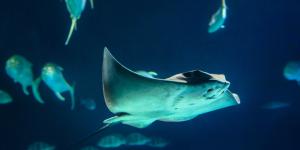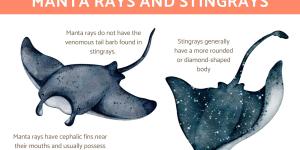Facts about the animal kingdom of Rays
Learn more about facts about the animal kingdom of rays by exploring our site and become a true expert on the animal kingdom. You'll find content created for the best professionals with pictures, videos and opinions.
6 articles

Manta rays are gentle giants, with distinctive fins and impressive size, have a fascinating reproductive process. Unlike egg-laying fish, manta rays give birth to live young, a sophisticated strategy. This journey, from conception to birth, exemplifies marine reproduction, involving complex courtship, internal...

These gentle giants inhabit a variety of marine environments across the globe, from tropical coastal waters to the vast open ocean. These fish need specific conditions to thrive: temperatures above 20°C, abundant plankton for food, and clean waters for survival. Their choice of habitat shapes everything...

Manta rays eat tiny sea life by filtering thousands of liters of water through their gills each hour. These massive fish, which can span up to 7 meters (circa 22ft) wide, live entirely on microscopic plankton and small marine creatures. Their diet sets them apart from other large ocean animals, as they...

Stingrays are a type of cartilaginous fish from the suborder Myliobatoidei. They are known for their flattened bodies which undulate through the water in a different way to most bony fish. As their name implies, they have a stinger on their tail which can be very dangerous. Despite all having a stinger,...

Despite being very differently shaped to most others, rays are a type of fish. Their flat body appears as if it is all fin, a morphology partially afforded by the fact they are cartilaginous. Having a boneless body with tough, but malleable cartilage allows them to move in a way other fish don't. While they...

Although stingrays are generally calm creatures, they do possess venomous barbs that contribute to their reputation for being dangerous. Encounters with stingrays are rarely fatal, but it's understandable to wonder about the risks of encountering them in open water.
In this AnimalWised article, we examine...
